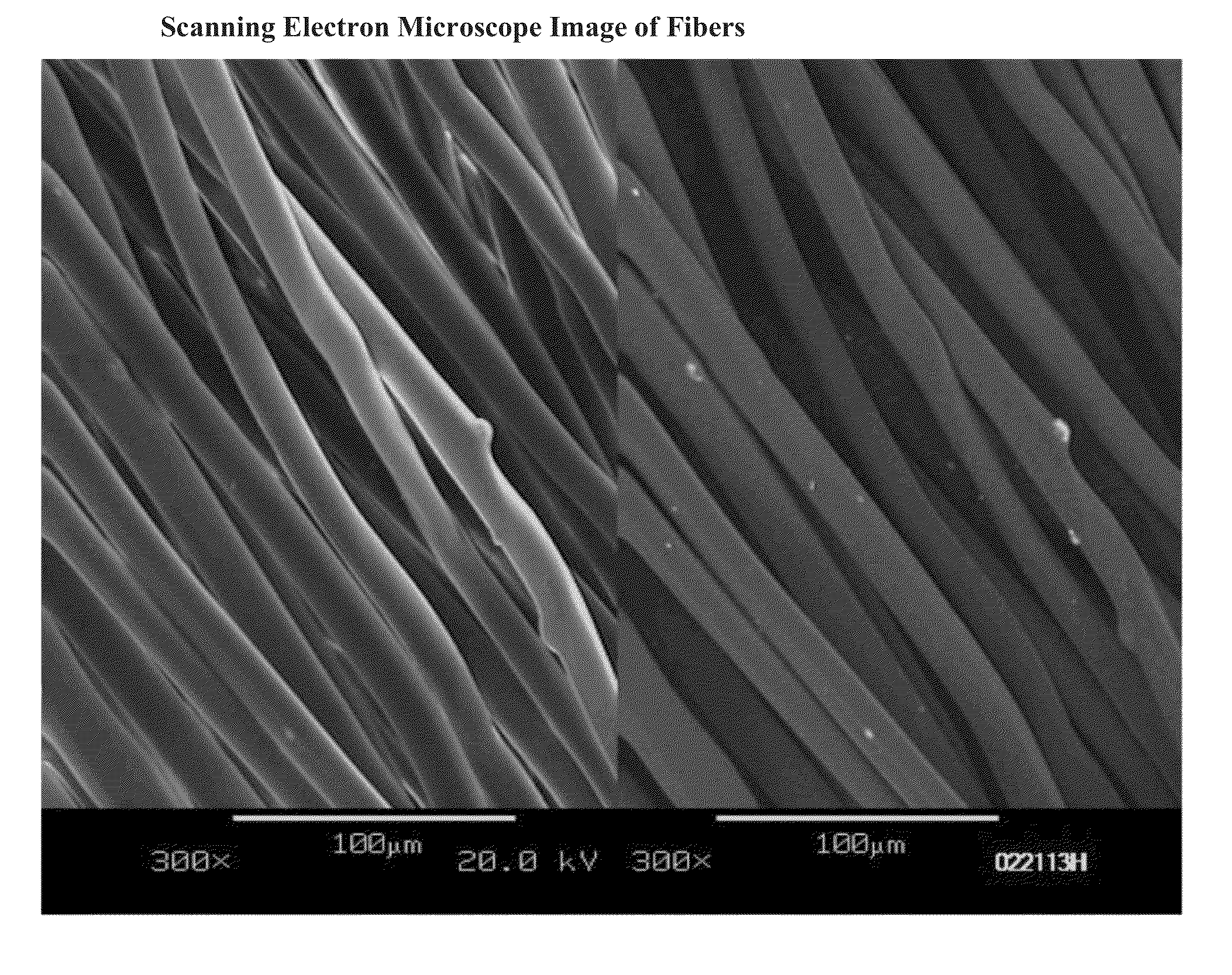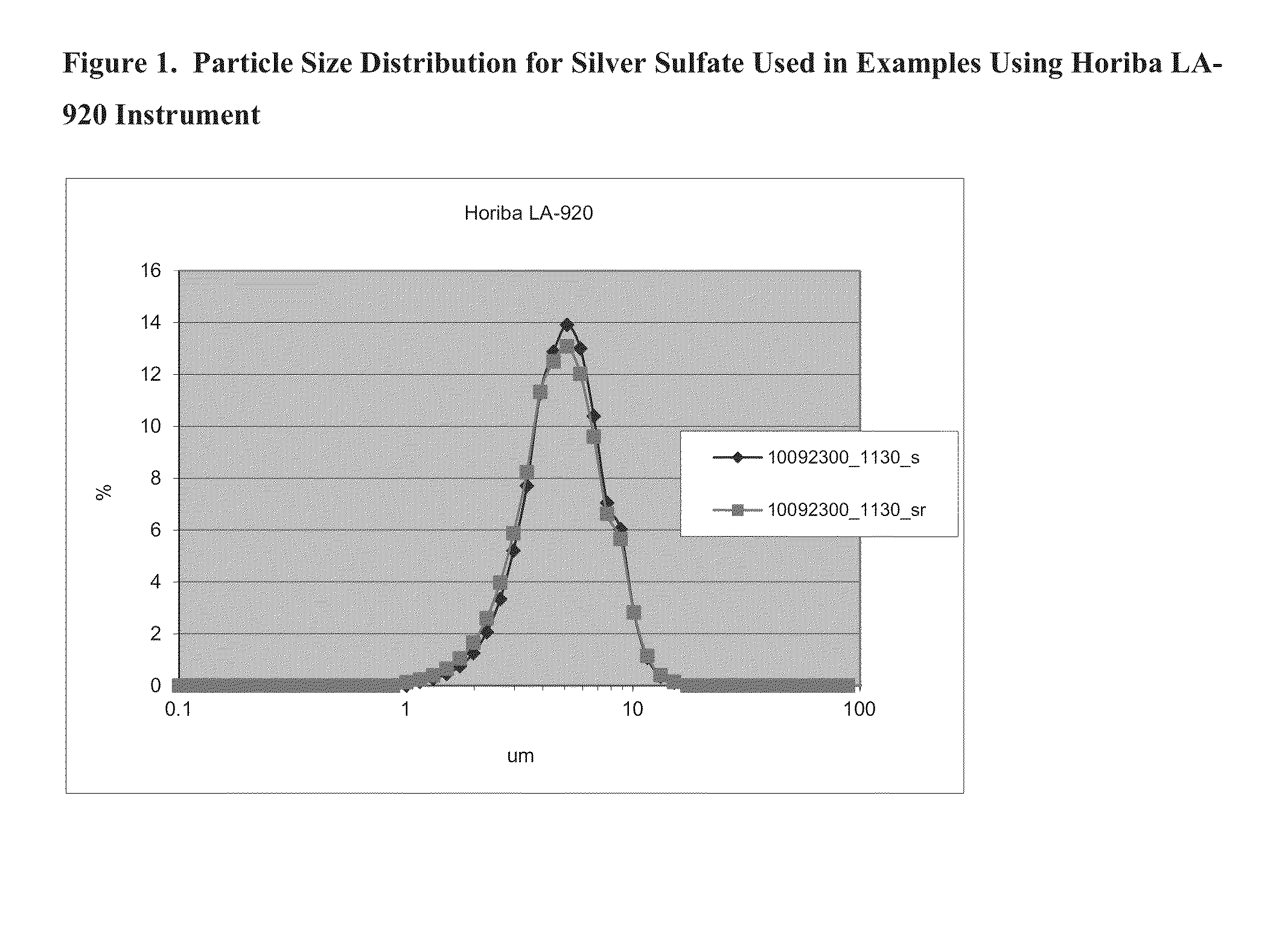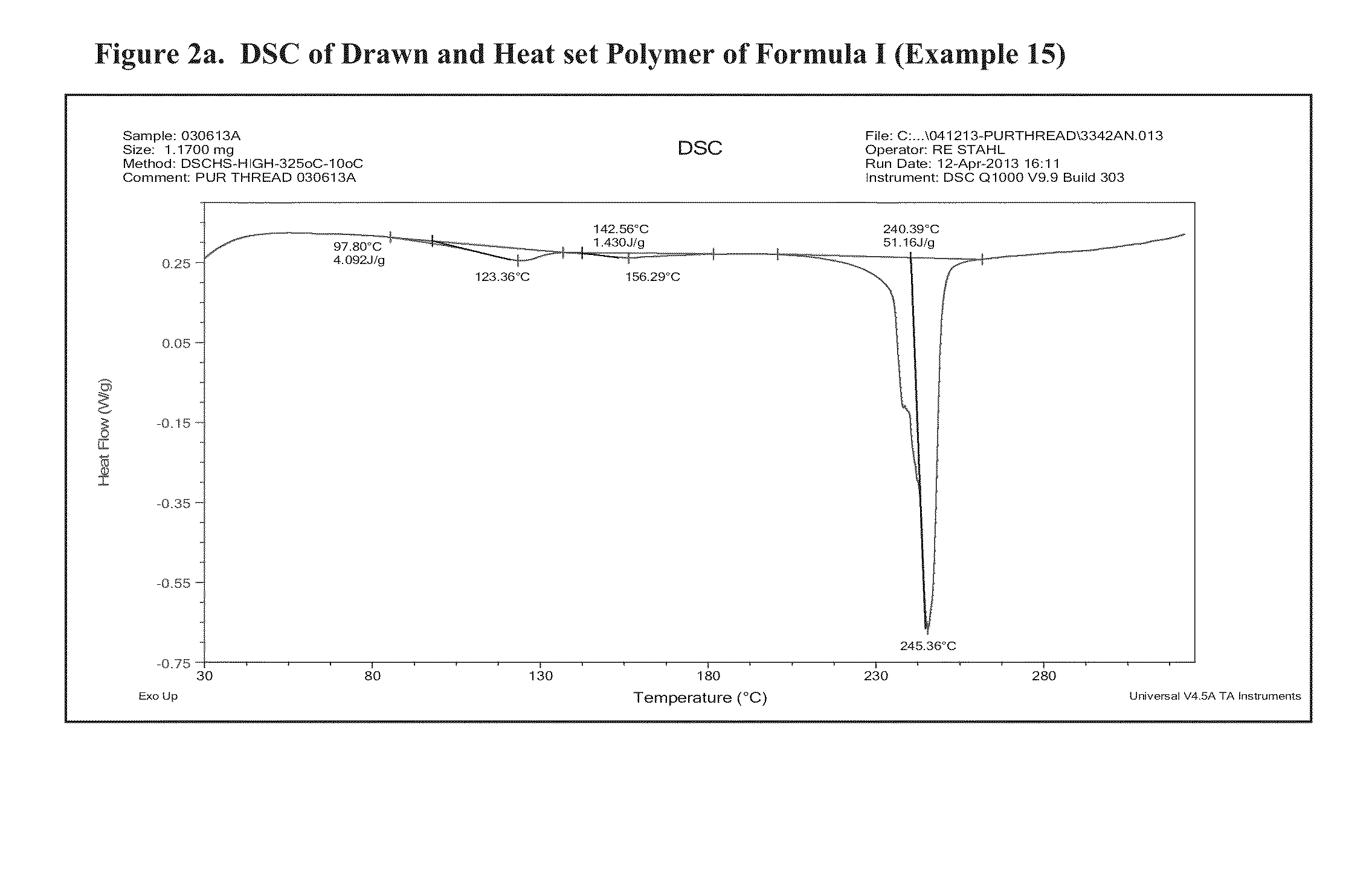Antimicrobial and Antifungal Polymer Fibers, Fabrics, and Methods of Manufacture Thereof
a polyester and antifungal technology, applied in the field of polyester materials for antifungal and antibacterial purposes, can solve the problems of poor laundering properties of fabrics in which silver salts have been topically applied, poor leaching of silver salts from topical fabric coatings, and general thermal and photochemical instability of silver salts
- Summary
- Abstract
- Description
- Claims
- Application Information
AI Technical Summary
Benefits of technology
Problems solved by technology
Method used
Image
Examples
example 1
091812F1
Using General Method A
[0113]Hot (60 to 80° C.) polyester pellets (PET, cylindrical, 5 kilograms) were added to a 25 gal mechanical mixer along with 30 g of a 50% (w / w) master batch of TiO2 in PET, and 25 g of a 5% master batch of Optical brightener (OB 1, Dalton-Clariant). These ingredients were mixed briefly, and 5 mL of a mixture of 98% distillates (petroleum), hydrotreated heavy naphthenic (CAS 64742-52-5) and 2% distillates (petroleum), hydrotreated light petroleum distillates (CAS 64742-47-2) was added and mixing continued for 3 minutes, until the PET pellets were evenly covered. Silver Sulfate (18 g, AgMPX, Eastman Kodak) was weighed out along with 2 g of anhydrous copper sulfate (CAS 7758-98-7), and both were added to the mixture and stirring was continued for an additional five minutes. This free flowing mixture was transferred to the hopper of a Varemac pilot scale extruder, which had been running neat PET pellets at 295° C., with an operating pressure of 500 PSI. T...
example 2
091812F1K-UW
[0118]The staple fiber from Example 1 was knitted into a 10 cm tube using methods standard textile methods. The knitted fabric was an off-white color and weight composition of 0.36% Ag2SO4, 0.04% CuSO4 and 0.3% TiO2, was characterized as follows.
[0119]ICP-OES (Galbraith Laboratories, GLI Procedure ME-70): A sample of 59.2 mg of cut fiber was combusted to leave an inorganic residue, which was dissolved in acid and analyzed by ICP-OES: Total silver (Ag): 2430 ppm, total copper (Cu): 166 ppm, total titanium (Ti): 1850 ppm.
example 3
092812A
Using General Method A
[0120]Hot (70 to 80° C.) polyester pellets (PET, cylindrical, 20 kilograms) were added to a 25 gal mechanical mixer along with 120 g of a 50% (w / w) master batch of TiO2 in PET, and 100 g of a 5% master batch of Optical brightener (OB1, Dalton-Clariant). These ingredients were mixed briefly, and 20 ml of a mixture of 98% distillates (petroleum), hydrotreated heavy naphthenic (CAS 64742-52-5) and 2% distillates (petroleum), hydrotreated light (CAS 64742-47-2) was added and mixing continued for 3 minutes, until the PET pellets were evenly covered. Silver sulfate (72 g, AgMPX, Eastman Kodak) was weighed out along with 8 g of anhydrous copper sulfate (CAS 7758-98-7), and both were added to the mechanical mixer and stirring was continued for an additional five minutes. This process was repeated twelve times. The individual twelve batches were added to the hopper of a Varemac Extruder, which had been running neat PET pellets at 295° C., with an operating pressu...
PUM
| Property | Measurement | Unit |
|---|---|---|
| particles sizes | aaaaa | aaaaa |
| particle size | aaaaa | aaaaa |
| particle size | aaaaa | aaaaa |
Abstract
Description
Claims
Application Information
 Login to View More
Login to View More - R&D
- Intellectual Property
- Life Sciences
- Materials
- Tech Scout
- Unparalleled Data Quality
- Higher Quality Content
- 60% Fewer Hallucinations
Browse by: Latest US Patents, China's latest patents, Technical Efficacy Thesaurus, Application Domain, Technology Topic, Popular Technical Reports.
© 2025 PatSnap. All rights reserved.Legal|Privacy policy|Modern Slavery Act Transparency Statement|Sitemap|About US| Contact US: help@patsnap.com



